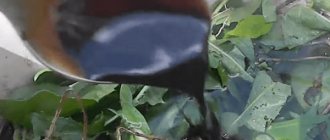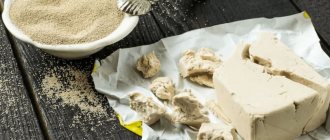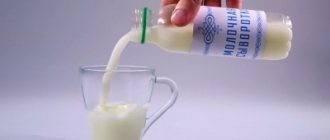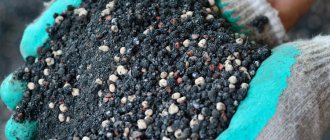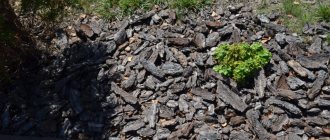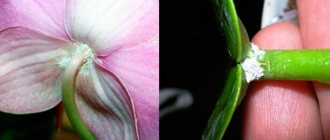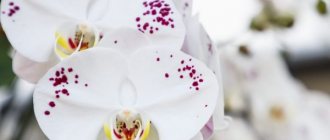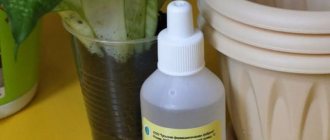General information about fertilizer
The formula of the substance is (NH2)2CO, the chemical name is carbonic acid diamide. It is obtained from ammonia and carbon dioxide. Urea has a crystalline structure and is usually granulated during production. Granules are 2-3 mm in diameter, colorless or white, no odor. They are slightly hygroscopic, but highly soluble in water and can be transported without problems. They should be stored in plastic bags; granulated urea does not stick together and almost does not cake. The fertilizer belongs to the 3rd class of substance hazard (moderately hazardous), you can work with it without protective equipment.
Urea contains 46% nitrogen, more than any other nitrogen or mixed fertilizer. The element is in the amide form; it has been established that in this form plants absorb it poorly. The rate of transformation of nitrogen into mineral form is affected by temperature and soil reaction: in warm and neutral soil the process proceeds fastest, in cold, acidic or alkaline soil it slows down.
Granulated urea contains biuret; this substance, if it is more than 3%, can inhibit and poison plants, especially sprouts. It should not be more than 1% in urea; however, this figure is usually not exceeded in commercially produced fertilizers.
Methods of application
Urea as a fertilizer for plants is applied in three ways:
- directly into the ground. The granules are distributed over the area and covered with soil;
- solutions. To achieve quick results, urea is dissolved in water and the solution is watered at the root of the plant;
- leaf method. To feed plants, a weakly concentrated solution is prepared, which is distributed onto the above-ground part of the plants using a spray bottle.
In order not to harm the plant, it is not recommended to use two different methods at the same time. This can lead to high nitrogen concentrations and plant death.
Feeding cucumbers in a greenhouse: 6 useful tips to avoid spoiling the plant
Advantages and disadvantages of using urea
Fertilizing with urea is as effective as using saltpeter and other fertilizers containing nitrogen. It can be used for all vegetable and garden crops, for soil preparation and for seasonal applications.
Due to the high nitrogen content of urea, you will need 3 times less than nitrate, so purchasing it is economically profitable. Plants that cannot tolerate chlorine will not suffer from the use of urea; it does not contain this element. It lingers in the ground for a long time, so it is recommended to use it on sand and sandy loam, from which other mixtures are quickly washed out.
The disadvantages of urea as a fertilizer are that when applied to the soil it does not act immediately, therefore it is not suitable for emergency fertilizing, it acidifies the soil, and if the concentration in the soil is too high, it inhibits seed germination.
Urea - composition
Confusion often arises due to the names: urea and carbamide, since many believe that we are talking about different substances. In fact, urea is urea, the same fertilizer.
The appearance of the two names is associated with different methods of obtaining urea. Back in the 18th century, urea was experimentally isolated from ordinary human urine (hence its first name).
Currently, the product is obtained by synthesis and is called urea. Although both names are used, both in everyday life and in scientific circles.
THIS IS INTERESTING! Urea as an additive is used in the production of chewing gum, as well as in the baking industry.
How to know that plants need urea: signs of nitrogen deficiency
A deficiency of the substance can be noticed by the appearance of the crop. Plants stop growing, the leaves become smaller, lose their normal green color and shine, the lower ones turn yellow, curl and fall off. Flowering occurs ahead of schedule, but the yield drops as few fruits are set.
An excess of nitrogen is also harmful to plants. This can be noticed by the increased growth of green parts and the dark green color of the foliage. In an overfed crop, the lower leaves curl and the fruits do not ripen well.
Reviews
Inna Gavrilovna, 65 years old, Penza region:
In times of food shortages, the garden was a salvation for the whole family. I used manure or water infusion of weeds as a nitrogenous fertilizer. I treated the soil with granules before planting potatoes, and there were significantly fewer Colorado potato beetles.
Marina, 45 years old, Volgograd:
We recently bought a plot of land outside the city. We grow vegetables and flowers for ourselves. I really like urea granules - they don’t smell, give good results and are cheap. You can choose a fertilizer in combination with phosphorus and potassium. There is also liquid urea. For each type of plant, the composition is already balanced.
The availability of the fertilizer is obvious, and the effectiveness is undeniable. Sufficient feeding of garden crops with urea is the key to plant health and a rich harvest. Ecologically clean products from the garden are much healthier than store-bought ones with nitrates and pesticides. The main thing is to observe moderation in everything and carefully read the instructions for using urea.
Instructions for use of urea
According to the instructions for use, urea fertilizer can be used in solutions or by distributing granules over the soil for further dissolution. It is also suitable for foliar spraying, does not cause burns, penetrates perfectly into leaf tissue, the effect is noticeable within 2 days. The substance may react with inorganic compounds and organic matter. It is convenient to use: you do not need to dilute urea for irrigation in hot water or mix it with other components to achieve the desired effect.
Urea granules for irrigation should be diluted in a proportion of no more than 50 g per 10 liters, when applied to the soil per 10 square meters. m use no more than 100 g of fertilizer. The granules must be embedded in the top layer of soil.
How to properly fertilize the soil with urea
Different crops require different amounts of the drug. Let's look at how to properly fertilize with urea in the spring and during the growing season of various vegetables, shrubs and trees. For convenience when preparing solutions, you need to remember that there is approximately 10 g of substance in a matchbox, 15 grams in a tablespoon.
Potato
You need to apply urea under it when preparing the soil, in the spring, along with potash fertilizers. For potatoes you need no more than 25 g per 1 square meter. m.
Grape
Adult bushes, from the 2nd year of life, are fertilized 3 times a season: in the spring, before and after flowering, when the ovary begins to grow. For grapes, take 30-50 g of the substance per 1 bucket.
We recommend reading
Use of Bordeaux mixture in horticulture and gardening
How to use chicken manure in the garden, preparing fertilizers
How to prepare a solution from powder and paste of the biological product Fitosporin-M
Instructions for use of the drug Epin extra
Tomatoes
Urea is applied to tomatoes once during planting. Urea consumption for seedlings is 20-25 g per 1 sq. m. A urea solution for irrigation is prepared from 20-30 g per bucket, for foliar feeding of tomatoes - 40 g per 10 l (used when ovaries appear).
cucumbers
You can water and spray them with solutions of this fertilizer. An irrigation solution is prepared from 15 g of the drug per 10 liters; foliar application for cucumbers is carried out with a liquid consisting of 10 g of urea and 20 g of potassium chloride.
Eggplant
They are fed only 2 times - during sowing of seeds and when the fruits begin to ripen. Consumption – 10 g per 1 bucket.
Cabbage
If there was no pre-planting application, then fertilizing with urea is carried out 15 days after the seedlings are planted. The norm is 30 g of the drug per 10 liters.
Garlic and onion
For onions and garlic, urea must be applied at the beginning of their growth. Prepare a solution by dissolving 10 g of the substance and calcium chloride in 10 liters.
Strawberries and wild strawberries
The first use of urea in the garden for strawberries occurs at the time of planting. It is applied directly into the planting holes, 5 g at a time. Then the strawberries are fertilized with urea during budding and ovary formation - they are sprayed with liquid (10 g per 2 l) on the leaf. In the fall, before covering the bushes for the winter, you need to feed the strawberries with a solution of 30 g of urea per 10 liters.
Processing and feeding currants with urea
Urea is applied to berry bushes in undissolved form - in granules, embedding them in a 10 cm layer of soil. This is done when leaves appear (20 g per plant), buds open and berries begin to fill (60-70 g). The fertilizer is effective against pests; for this purpose, in spring and autumn, during preparation for winter, berry plants are treated with urea. Concentrated solution - 50-70 g per 10 liters of water.
Application of urea for garden flowers
Annuals are fed 2 times during the summer: 1.5-2 weeks after they are planted and during the formation of buds. Perennial flowers are also fertilized after they bloom, so that they have time to recover before they go to winter. The application rate is only 5-10 g per 1 square meter. m. For a lawn, the dosage is different - 15-20 g per 1 sq. m. m. You can spray the flowers monthly; foliar fertilizing with urea will enhance their flowering.
Fertilizing indoor plants and flowers with urea
Usually complex fertilizers such as Agricola are used for them, in which all the elements are taken in the ratio and dose required for indoor flowers. But during a period of rapid growth, you can fertilize indoor plants with urea, but take it in very small doses - 5 g per 10 liters.
Treatment of fruit trees with urea
It will come in handy not only in the garden, but also in the garden. Trees are fertilized in the spring by adding 15-20 g of granules to the tree trunk circles. The garden is treated with urea, spraying the trees leaf by leaf with the solution. To dilute urea for spraying trees, you need to take 20-30 g per 10 liters of water.
Urea as protection against pests
Spraying with urea is used as an insecticide against insects that harm fruit trees. It is carried out in early spring, before the buds open, and in the fall, after leaf fall. Spraying with urea will protect against weevils, aphids, scab, and anthracnose. The solution is prepared from 0.3-0.5 kg of fertilizer per 10 liters.
FAQ
In order for the use of urea as a fertilizer to be effective, the dosage must be observed. Summer residents often have the following questions.
Where to buy urea?
You can purchase urea at any specialized store that sells seeds and fertilizers.
How to store urea?
To ensure that the granules do not lose their characteristics, the fertilizer must be stored in a plastic bag. For storage, select a dry place, protected from direct sunlight.
Is there a danger to humans?
Urea is a harmful substance for humans. Therefore, if it enters the body, you must contact a medical facility. During fruit ripening, it is not recommended to treat with urea. The fruits can be consumed 10 days after applying fertilizers.
Is it possible to apply urea in the fall?
Fertilizer can be applied in the fall during the period of digging up the site. However, the effectiveness of fertilizing is reduced.
Can urea be mixed with other fertilizers?
It is not advisable to mix urea with other fertilizers. Summer residents should remember that urea does not mix with phosphorus, chalk and lime.
Is it possible to harm plants by fertilizing with urea?
Yes, excessive use of urea can harm plants. With a large amount of nitrogen, the crop grows poorly, it may shed leaves and not form buds.
What is the difference between urea and ammonium nitrate?
Ammonium nitrate and urea belong to the same class of fertilizers. Therefore, summer residents are often confused. The following distinguishing criteria need to be considered. August root feeding of cucumbers with homemade complex fertilizer to increase yield
| Distinctive feature | Urea | Ammonium nitrate |
| Compound | Nitrogen content 46.2 | Nitrogen content 36 |
| Impact on soil and plants | Gradually breaks down and slowly affects the plant | Refers to fast-acting fertilizers |
| Application | Can be used for both root and foliar feeding | Suitable for root application only. Foliar feeding causes burns. |
Saltpeter can be used throughout the season. While urea is most often used in the spring.
Common mistakes
Inexperienced gardeners may make mistakes in using urea:
- Urea is produced in two grades: “A” is used in the chemical industry and livestock farming, “B” is used in agriculture. Therefore, it is important not to confuse these types of urea and fertilize flowers with grade “B”.
- Another mistake is combining urea with incompatible fertilizers. Fertilizers with which urea cannot be combined are listed above.
- Is it possible to water indoor flowers with urea? It is possible, but only in the spring-summer period, since in winter the plants enter a dormant phase, and by provoking the resource-intensive growth of green mass in the cold season, you can destroy the indoor plant.
- Wanting to get abundant flowering, some gardeners feed plants with urea more than once. This should not be done, since an excess of nitrogen fertilizers has negative consequences, just like its deficiency.
When should fertilizer be used?
The following signs serve as a signal to fertilize plants with nitrogen-containing compounds:
- The growth rate of trees and shrubs is greatly slowed down.
- The plant produces many new thin, lifeless shoots.
- The leaves are smaller than usual. The color of the leaves is yellowish.
- There are few flowers, and they are weak and do not open completely.
All the symptoms described indicate that the plant does not have enough nitrogen and requires feeding. Feeding with a urea solution will solve these problems and return shrubs and trees to a healthy appearance.
Spraying with urea solution is also used to increase the number of ovaries. To ensure the maximum number of flowers, during the flowering period the plant must be treated with a weak solution of urea from a sprayer. The solution is prepared in the proportion of 10 grams of urea per 1 liter of water.
Pest Control
With the onset of spring and warm days, various garden pests wake up: weevils, aphids, copperheads. They can cause serious damage to garden plants. The use of expensive drugs does not always give high-quality results. In addition, many insect repellents harm the plants themselves.
Spraying the garden using urea
Liquid urea is an affordable and safe way to control pests. With its help, you can not only eliminate insects, but also feed the plant with the necessary nutrients. Thus, pest control is combined with caring for the harvest.
To prepare a solution for treatment, mix 50-70 grams of fertilizer in one liter of water and thoroughly treat the plant with a sprayer. Spraying should be done when warming has already set in, but the plant buds have not yet blossomed. Such prevention will help get rid of wintering pests. Important: do not make the solution too concentrated. It can burn the leaves.
Urea also helps in the fight against infectious plant diseases such as scab and purple spot. To get rid of the disease, you need to wait until the leaves begin to fall off the plant. With the arrival of leaf fall, the plant itself, as well as the foliage lying at its foot, are treated with a concentrated urea solution. This way you can not only get rid of the infection. But additionally fertilize the soil before wintering.
